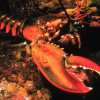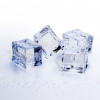Recreating Ancient Environments
Interview with
Kat - I understand that you're studying the environment of Portugal.
Harriet - Yes, I'm interested in the way ecosystems change over time, and that could be thousands of years or it could be over even shorter periods of time.
Kat - So what's the environment like now in Portugal, and how was it ten thousand years ago?
Harriet - In common with many other Mediterranean landscapes today, the vegetation is very much dominated by shrub land communities, which are extremely well suited to the hot, dry summers and the cool and relatively wet winters. About ten thousand years ago, you would have had a more deciduous type of vegetation with many more trees in the landscape than we would see today.
Kat - So big leafy trees?
Harriet - Yes, deciduous but not so much chestnut because many of those have been imported from the eastern end of the Mediterranean to the western end, but there would have been many more deciduous oaks and other taxa.
Kat - How do you know that this change has taken place? We only see the trees we've got now.
Harriet - There are certain types of environments such as wetlands where we can extract material the dates back over thousands of years. We can use sediment cores and go down a metre at a time where we can retrieve material. We then take it back to the laboratory and analyse small quantities of it and see which pollen has been preserved within the sediment. By looking at the pollen we can identify the different species or more commonly the genera or the families from which the pollen has come. From that we can reconstruct what the vegetation was like.
Dave - Are you just looking at the pollen grains and you can recognise all the different types of pollen grain?
Harriet - Yes. Pollen grains have different types of ornament depending on the species. Some of them look a little bit like mediaeval instruments of torture because they've got large spines sticking off them. These are large in the context of being microscopic of course. They may come from some of the more weedy species such as you might find in the daisy family. By complete contrast, if you look at something like pine pollen, it has air sacs. If you imagine Mickey Mouse's face just for a moment, the face is the basic part of the pollen grain and Mickey's two ears are the air sacs that help to make this particular grain very buoyant and well-dispersed. So different types of pollen have different ornaments that can be relatively easily identified under the microscope and allow you then to identify the grain either to the species or usually to the genus and sometimes only as far as the family level.
Kat - But how do you know how old these things are? Are they fossils?
Harriet - Technically for the last ten thousand years they're not fossils. We might refer to them as sub-fossils, but they are the intact grain that has been preserved in the environment. So they've been washed in or blown in, incorporated in the water column, and then settle out through the water column to be incorporated into the sediment that accumulates at the bottom of the lake.
Kat - But how do you know how old pollen is? It's just incorporated into the mud.
Harriet - Well it is just in the mud and in a sense you can't just date the pollen. What you're dating is the material in which the pollen is found.
Kat - So you're dating the mud.
Harriet - Yes or it could be a peat bog or it might be in a riverine environment where you've got more silty or sometimes gravel conditions. To some extent it depends on how much organic material there is available. If there's a lot of organic material then you can use radio carbon dating and that will then give you some dates.
Dave - Do you see big major events in the pollen record too, such as volcanoes and things?
Harriet - Well you don't tend to see that in the pollen record but you do see it in the sediments. I've got some colleagues who work in Greek lakes and they find layers of ash that have come from some of the Italian volcanoes. If you know what the chemical signature of the ash is, you can then identify which volcano it has come from and by extrapolation from other sources you can work out when it was deposited in the lake.
Kat - So to go back a little bit, you've said that over the past ten thousand years we've seen quite a dramatic change in even just a country like Portugal. What kind of thing has caused that change in climate and are we still seeing the climate changing now?
Harriet - It's a bit of a tricky question to answer because no two people will necessarily give you the same answer with respect to Portugal or other Mediterranean countries. It rather polarises between those who think that the vegetation has changed because people have changed the landscape, and those people who regard it as evidence of climate change. Somewhere about 5-6 thousand years ago there are suggestions that the climate became a bit more arid, and at that time you moved from the deciduous taxa to the more evergreen taxa. But other people argue that that was probably a result of people clearing the landscape for agriculture. The soils degraded and so when there was recovery of any vegetation, it was less likely to be the deciduous taxa that came back in than evergreen taxa. There's some suggestion that there was a slow spread between the eastern Mediterranean towards the western Mediterranean, which might have matched agriculture arriving in the eastern Mediterranean and towards the west and north west to the UK.
Kat - And to extrapolate a little bit to the UK, we know that the climate is changing and it looks like things are getting warmer. Do you think we'll see the sort of trees we have in the UK changing? We have our big oak trees and chestnuts, but could they be doomed?
Harriet - I'm not sure about doomed. There are some suggestions that gardeners ought to be changing the species that they're growing in their gardens. On the radio this morning there was some suggestion that people should start to grow olives and that maybe in a few years time olives will be a crop that you'll find within the UK. I think that it's being grown on an experimental basis down in Devon at the moment. I think it's very likely that the vegetation will change in response to the climate changes that we're seeing.
- Previous Mummies of Peru And Bolivia
- Next Societies in The Sahara










Comments
Add a comment